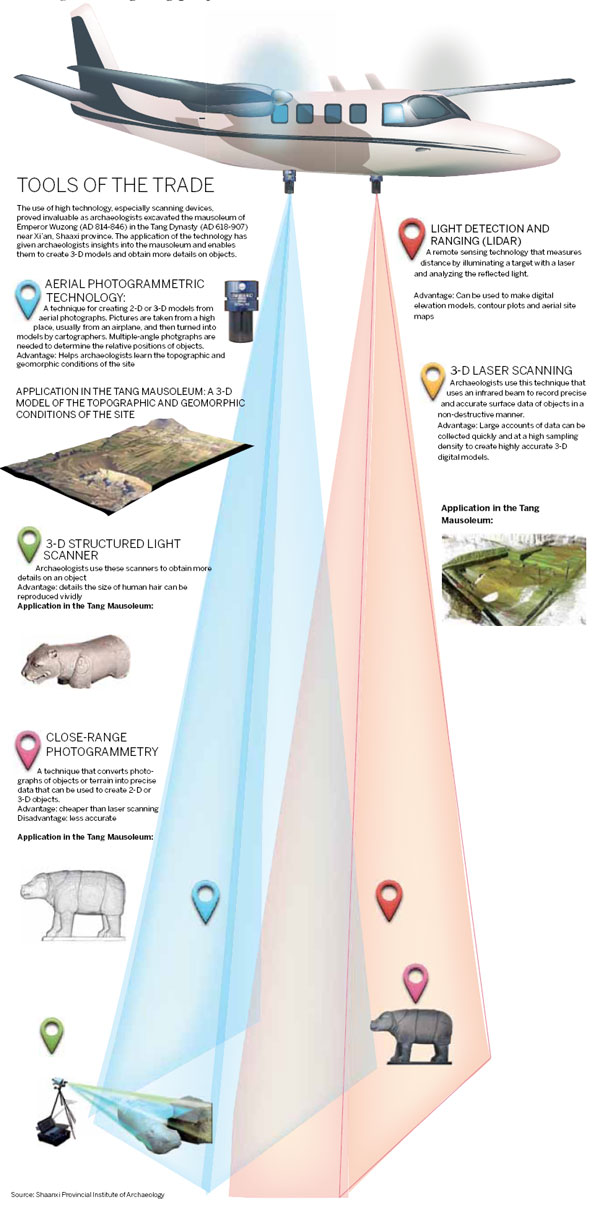New tools preserve ancient treasures


At a conference in Xi'an, archaeologists discuss how the digitalization of historical sites and relics help recreate communities, allowing them to look into the past and see the future. But experts warn data preservation can face challenges, Cheng Yingqi reports.
Being an archaeologist can be boring. Hours of digging square holes in the ground and filling out paperwork, right? That may have been true in the past, but archaeology is more than just about the past, it helps us understand the future. And today's practitioners, with computers and state-of-the-art cameras, would not consider their work boring. "Heritage is not always immortal, it can vanish, but information lasts forever," said Professor Lu Dongming at Zhejiang University. "Excavating and preserving relics is no longer the sole purpose of archaeological digs. All information should be recorded during the process. In fact, digital documentation is as important as preservation," said Lu, who specializes in applying computer technology to archaeological studies.
In the past 30 years some 40,000 cultural treasures have been lost to future generations, more than 50 percent of which destroyed by construction, China News Agency reported in June, citing the Ministry of Culture.















